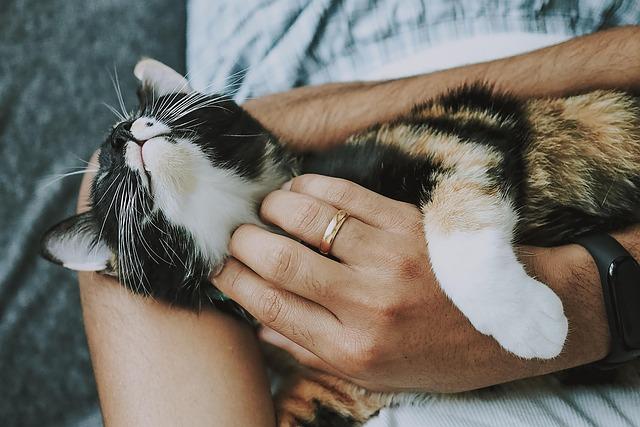How to Calm a Scared Rescue Cat?

How to Calm a Scared Rescue Cat? A Step-by-Step Guide for New Pet Parents. Bringing home a rescue cat is an exciting and rewarding experience, but it can also be a little nerve-wracking—especially when your new feline friend seems more frightened than friendly. Don’t worry; you’re not alone in this! Many rescue cats feel scared in new environments, but with patience, love, and a little know-how, you can help them settle in and thrive. Let me walk you through what I’ve learned from working with rescue cats.
Why Are Rescue Cats Often Scared?
Rescue cats come with a past, and not all of it may have been rosy. They might have been stray, abandoned, or lived in stressful situations. Even a loving shelter can be overwhelming with its unfamiliar smells, sounds, and sights.
Now imagine being transported to a new home where everything is unfamiliar yet again. It’s no wonder they’re a bit on edge! Understanding that their fear comes from a place of survival instinct can help you stay patient as they adjust.

How to Calm a Scared Rescue Cat?
Creating a Safe Space for Your Rescue Cat
The first thing you’ll want to do is create a “safe zone.” Think of this as their cozy retreat where they can decompress. A small, quiet room works perfectly. Add a comfy bed, a litter box, food, water, and maybe a scratching post. This area should be off-limits to other pets or small children until your new cat feels more confident.
When I brought my rescue cat, Luna, home, I set her up in the guest bedroom. She spent the first few days under the bed, but that was okay! Cats need time to observe their new surroundings from a safe spot.
The Importance of Patience and Routine
Cats are creatures of habit, so creating a predictable routine can help them feel secure. Feed them at the same times every day and clean their litter box regularly. Even small consistencies like using the same tone of voice when talking to them can help.
One tip: Resist the urge to overwhelm them with attention. Let them come to you on their terms. Luna took almost a week to approach me, but when she finally did, it was the sweetest reward!
How to Build Trust with a Scared Rescue Cat
Building trust takes time, but it’s worth every second. Start by sitting quietly in their room and just being present. Read a book, scroll through your phone, or even talk to them in a soft, calm voice.
Avoid direct eye contact, as cats can see that as a threat. Instead, try the “slow blink.” It’s like a kitty handshake—closing your eyes slowly and then reopening them shows your cat you’re not a threat.
Treats can also be your best friend! Offer them a tasty morsel whenever they approach or seem curious about you. Positive reinforcement works wonders.

How to Calm a Scared Rescue Cat?
How to Handle a Cat That’s Afraid of Touch
If your rescue cat flinches when you try to pet them, don’t push it. Start by extending your hand palm-down near them and letting them sniff you. Once they’re comfortable with that, try a gentle touch on the head or cheeks—these are less intimidating areas for most cats.
Luna used to dart away if I even moved my hand too quickly. So, I switched to using a soft brush instead of my hand, which she actually loved! Now she’s a total cuddle bug, but it took time and trust to get there.
Introducing a Rescue Cat to Other Pets
If you have other pets, slow introductions are key. Start by keeping them in separate spaces and swapping their bedding or toys so they can get used to each other’s scent. After a few days, let them see each other through a barrier like a baby gate or cracked door.
Face-to-face meetings should be supervised and short at first. Watch for signs of stress like growling or hissing and separate them if needed. Patience is everything!
When to Seek Professional Help for Your Rescue Cat
Sometimes, despite your best efforts, a rescue cat’s fear might persist. If they’re not eating, hiding excessively, or showing signs of aggression, it may be time to consult a vet or animal behaviorist. There’s no shame in seeking help; it’s all about ensuring your cat’s happiness and well-being.
Pheromone diffusers or calming collars can also be helpful. They release scents that mimic natural feline calming signals, which can make a big difference.

How to Calm a Scared Rescue Cat?
Long-Term Care: Helping Your Rescue Cat Thrive
Over time, you’ll notice your scared rescue cat starting to come out of their shell. They might follow you around, rub against your legs, or even hop onto your lap. Celebrate these small victories—they’re huge signs of progress!
Remember, every cat is different. Some might take days to adjust, while others need weeks or even months. The key is consistency, patience, and love. Watching Luna transform from a terrified ball of fluff into the confident, playful cat she is today has been one of the most rewarding experiences of my life.
Final Thoughts
Calming a scared rescue cat isn’t always easy, but it’s deeply rewarding. With time, you’ll see their personality blossom, and the bond you’ll share will be incredibly special. So, take it slow, be patient, and remember: every little step forward is progress.
Do you have any tips or stories about calming a rescue cat? I’d love to hear them in the comments!
How to Introduce a Cat to a New Home





















